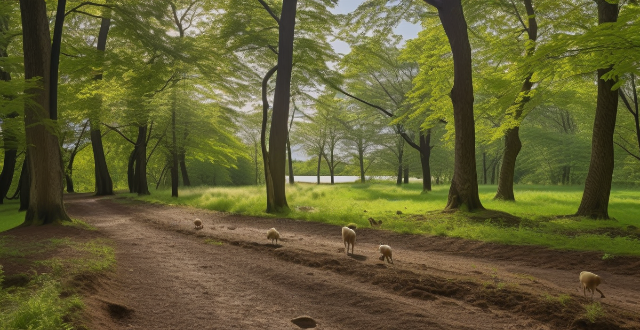Designing ecological protection areas requires balancing wildlife preservation and human well-being. Strategies include community involvement, sustainable resource use, zoning, environmental education, law enforcement, research, partnerships, and funding.

Designing Ecological Protection Areas: Balancing Wildlife and Human Well-being
Ecological protection areas are crucial for preserving biodiversity, maintaining ecological processes, and ensuring the sustainability of natural resources. However, it is essential to design these areas in a way that not only benefits wildlife but also considers the well-being of local communities and visitors. Here's how we can achieve this balance:
1. Community Involvement
* _Engage Local Communities:_ Actively involve local communities in the planning and management of ecological protection areas. This ensures that their needs and concerns are addressed, fostering a sense of ownership and responsibility.
* _Capacity Building:_ Provide education and training programs to enhance the skills and knowledge of local communities. This helps them understand the importance of conservation efforts and empowers them to contribute effectively.
2. Sustainable Use of Resources
* _Promote Sustainable Livelihoods:_ Encourage activities like ecotourism, sustainable agriculture, and community-based forestry that support both conservation and local livelihoods.
* _Resource Management:_ Implement sound resource management practices to prevent overexploitation and degradation of natural resources.
3. Zoning and Land Use Planning
* _Core Protection Zones:_ Designate areas where human activity is strictly limited to protect critical habitats and vulnerable species.
* _Buffer Zones:_ Create buffer zones around core protection areas where controlled human activities are permitted, serving as a transition between protected areas and human settlements.
* _Sustainable Use Zones:_ Allocate zones for sustainable resource use, recreation, and tourism, ensuring minimal impact on protected ecosystems.
4. Environmental Education and Interpretation
* _Visitor Centers:_ Establish visitor centers to provide educational materials and interpretive programs about the ecological protection area's significance.
* _Trail Systems:_ Design trail systems that allow visitors to experience the beauty of nature without disturbing wildlife or damaging ecosystems.
5. Law Enforcement and Governance
* _Regulations:_ Develop and enforce regulations that balance conservation objectives with social and economic needs.
* _Governance Structures:_ Establish clear governance structures involving multiple stakeholders, including government agencies, NGOs, and local communities, to ensure effective management and decision-making.
6. Research and Monitoring
* _Baseline Data Collection:_ Conduct comprehensive research to establish baseline data on biodiversity, ecosystem health, and human impacts.
* _Ongoing Monitoring:_ Implement regular monitoring programs to track changes in biodiversity, ecosystem services, and human activities within the ecological protection area.
7. Partnerships and Collaboration
* _Collaborative Partnerships:_ Foster partnerships between governments, NGOs, research institutions, and local communities to share knowledge, resources, and best practices.
* _International Cooperation:_ Engage in international collaborations to learn from successful models worldwide and address transboundary conservation challenges.
8. Funding and Resource Allocation
* _Secure Funding:_ Ensure adequate funding for conservation efforts through government budgets, international grants, and private sector investments.
* _Resource Allocation:_ Allocate resources equitably among different zones and activities within the ecological protection area to support both wildlife and human well-being.
By adopting these strategies, ecological protection areas can become models of harmony between humans and nature, where biodiversity thrives alongside prosperous and engaged communities.